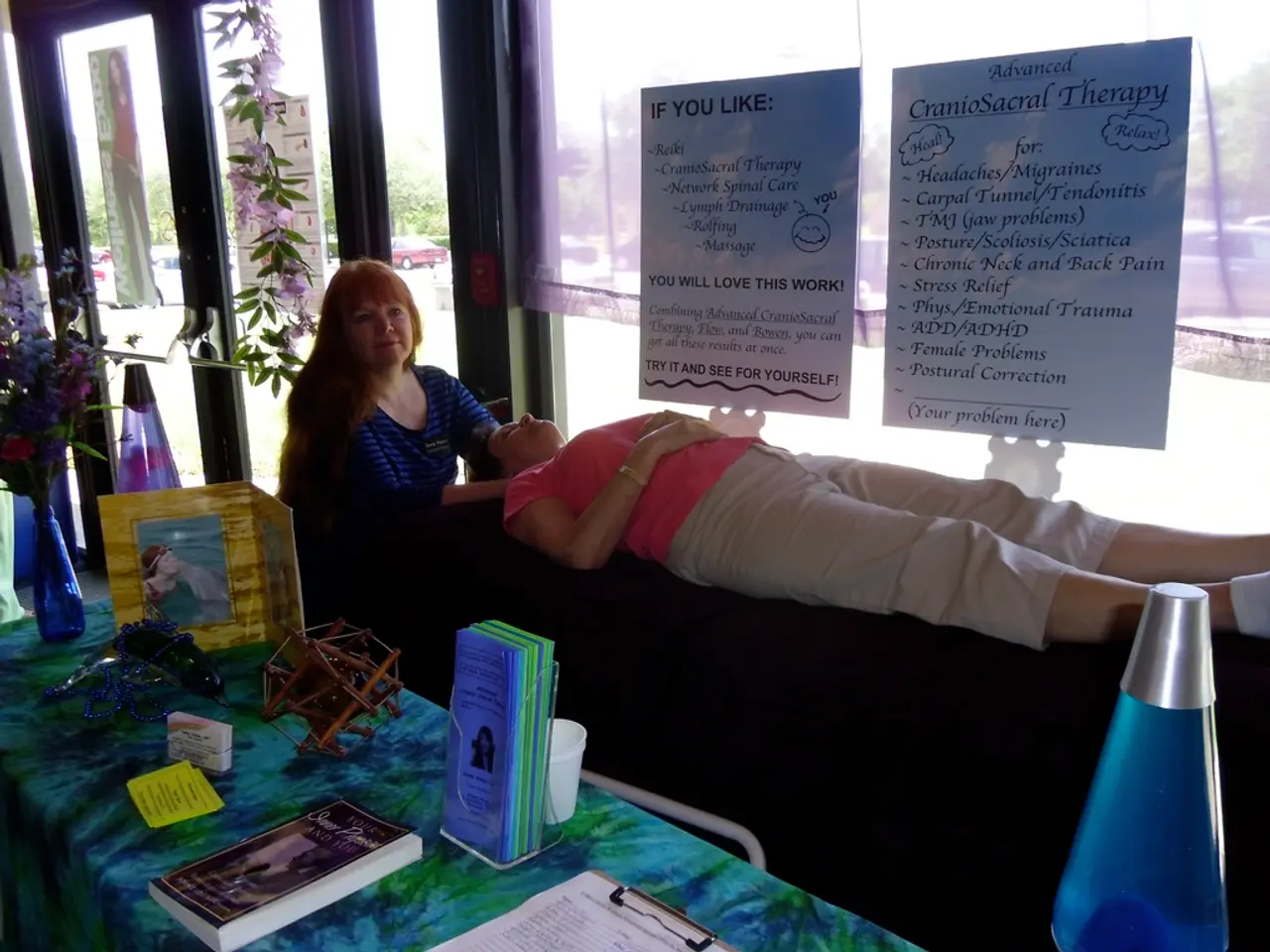Navigating PTSD Activators: Practical Mindfulness Methods for Coping
In the wake of increasing mental health issues among young adults, particularly Post-Traumatic Stress Disorder (PTSD), evidence-based mindfulness techniques have emerged as effective tools for managing PTSD triggers. These approaches, including mindfulness meditation, controlled breathing exercises, grounding practices, mindful movement such as yoga, and small sensory coping tools, are tailored specifically for Gen Z and Millennial women.
Mindfulness, a practice of focusing on the present without judgment, has been shown to help manage PTSD symptoms. Mindfulness meditation, for instance, encourages present-moment awareness, reducing the frequency and intensity of intrusive PTSD-related thoughts. This technique, supported by research and clinical practice, can be a powerful ally in the battle against PTSD.
Controlled breathing exercises, such as slow, deep breathing and the physiological sigh (double inhale through the nose followed by a long exhale through the mouth), activate the parasympathetic nervous system, reducing anxiety rapidly and helping regain calm during triggers. Grounding techniques, which focus attention on immediate sensory experiences, also play a crucial role in anchoring the mind in the present and interrupting distressing flashbacks or overwhelming emotions.
Mindful movement, particularly yoga, integrates gentle movement and mindfulness, helping increase body awareness and decreasing PTSD symptoms by improving emotional balance and reducing physiological arousal. Small, simple sensory activities, like squeezing a stress toy or coloring mandalas, can act as immediate grounding tools, regulating the nervous system and promoting calm quickly.
Establishing structured routines, such as regular sleep, meals, and activity schedules, provides predictability and stability, which are essential in managing PTSD symptoms. These techniques are often most effective combined with trauma-informed therapy, such as EMDR or talk therapy, and professional guidance enhances outcomes.
In addition to these techniques, mindful walking, visualization, and body scan meditation have also shown promise in lessening PTSD symptoms. Mindful walking combines movement and mindfulness, while visualization involves mentally escaping to a peaceful place, both helping reduce stress levels and improve mood. Body scan meditation, a practice of heightening bodily awareness, can help individuals regulate emotions and reduce stress when dealing with PTSD triggers.
Technology, such as apps like Headspace or Calm, can provide guided help for mindfulness practices and have been found to be stress-busting and mental well-being boosting. These digital tools offer convenience and accessibility, making mindfulness a daily staple for many.
It's important to note that while these techniques can be beneficial, they should not replace professional help. Seeking guidance from a mental health professional when in doubt can be crucial in managing PTSD effectively.
In summary, mindfulness approaches tailored for younger women with PTSD emphasize practical, accessible, and evidence-supported strategies like controlled breathing, meditation, grounding, and small sensory coping tools to manage triggers effectively. These methods help regulate the nervous system and foster emotional resilience in daily life.
- Mindfulness, a practice that focuses on the present without judgment, has been proven beneficial for managing symptoms of Post-Traumatic Stress Disorder (PTSD) among young adults.
- Mindfulness meditation, a technique that encourages present-moment awareness, can significantly reduce the frequency and intensity of intrusive PTSD-related thoughts.
- Grounding techniques, which focus on immediate sensory experiences, can quickly anchor the mind in the present and interrupt distressing flashbacks or overwhelming emotions.
- Technology, including mindfulness apps like Headspace or Calm, provides guided help for mindfulness practices and can be used as a daily tool to boost mental well-being and reduce stress levels.




